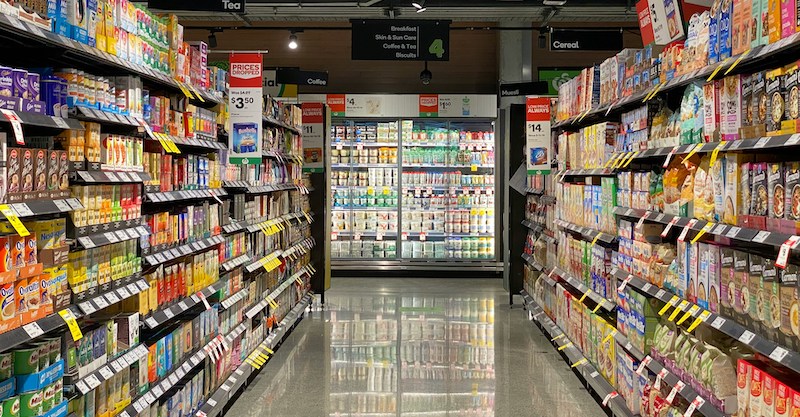This first appeared in Lit Hub’s Craft of Writing newsletter—sign up here.
Article continues after advertisement
I always take my characters grocery shopping when I’m working on a novel. I like to push a cart around a supermarket, deciding what my character will buy. It’s the single best way for me to understand a character well enough to inhabit her on the page.
I need to know if my character shops for convenience or comfort. If she’s buying ingredients for elaborate recipes, or frozen ready-meals. I usually take her to a supermarket when I’m about a quarter of the way into a first draft. By this point, I know my character’s disposition, her internal weather, and I’m working out the particulars of her life: her job, her home, her routines. A supermarket trip can shake some of those pieces loose.
For my new novel, Trust Her, I figured out that Tessa cooks for control and order, as threats mount around her. She’s an ambitious, aspirational cook. Her sister Marian finds cooking boring and constraining. Figuring out that one dynamic between them opened up so many other tensions in their relationship as sisters.
Some of this supermarket research never makes it onto the page. I know, for example, that Eamonn’s fridge is empty, except for beer and sauce packets from past take-out orders. This is not wildly relevant to the story, but it gives me the confidence to write his dialogue and actions.
People are a bit vulnerable in a supermarket: they might be tired or hungry, stopping on their way home after a long day at work; they might be consumed with worry at the prices; they might be caregivers, carefully choosing food that someone else will eat. They might be optimists, cheerfully buying greens that will absolutely wilt before anyone cooks them. They might be choosing their groceries in a fit of nostalgia, or gloom, or restlessness.
One of my top-ten fictional supermarket scenes comes from The Bass Rock by Evie Wyld. In the first chapter, Viv stops at a supermarket in Musselburgh, on the coast of Scotland: “I move on, and though I try to think of something new and interesting to cook, by the time I get to the frozen aisle, I have spaghetti, tinned tomatoes and tinned clams. A box of eggs I will never use and some sliced brown bread and the herbs. None of it I want to eat tonight. But it is at least food that suggests a certain seriousness.” And there we have her, our protagonist, a woman full of frustration and longing, achingly real.
The Three of Us by Ore Agbaje-Williams opens with these lines: “Temi comes over at twelve. She brings along the wine and the Kettle Chips I asked her to bring, as well as a packet of cigarettes.” I remember reading those lines in a bookstore, and being instantly, entirely sold: I was going with Temi, wherever she wanted.
I love when characters are also seduced by food, when certain dishes and drinks color an affair. In The Woman Upstairs by Claire Messud, Nora’s obsession with Sirena, Skandar, and their son Reza is wrapped up in the “extraordinary” food they serve when she comes over for dinner: “bowls of lamb stew over rice, fatty and spicy and fragrant,” with cumin and currants. Their dinner is indelible, part of the romance.
In Home Fire by Kamila Shamsie, a crucial scene between two lovers unfolds as they pit and eat cherries together, staining their hands and clothes. The simplicity of the food makes the dramatic arc of their conversation even more distressing.
So often food appears on the page at a moment of tension or reversal: on the table at a first encounter, set out at a wedding or a funeral, eaten alone on a sofa after receiving bad news.
It also stakes out the season and the landscape. I love reading about summer food—watermelon, dan dan noodles with cold cucumber, chilled retsina—and winter food—fondue, mulled wine, raclette.
I can’t always travel to all the landscapes in my book, or return to them, but I can probably cook dishes from those locations. Learning about and eating Irish food was one of my favorite parts of the writing process: barmbrack, wild blackberries, Dublin Bay prawns, dulse, carrageen-moss pudding. It connected me to my characters, and to the book’s atmosphere.
So say you find yourself at a supermarket, sometime soon. The automatic doors are starting to slide open. Let’s pretend that the person watching those doors open is actually your character. She’s coming here straight from the last scene you wrote. What sort of state is she in?
Is she hungry?
__________________________________
Trust Her by Flynn Berry is available now via Viking.

